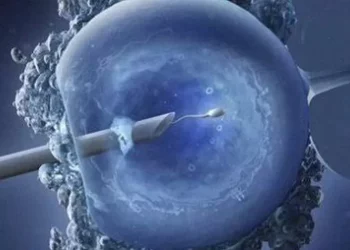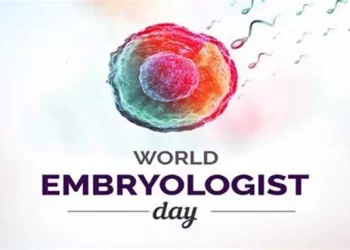Infertility is a common issue affecting many couples worldwide. It can be a source of significant emotional and psychological stress. Infertility is generally classified into two main categories: primary and secondary infertility. Understanding the differences between these types is crucial for diagnosis, treatment, and managing expectations. This article aims to provide a detailed comparison of primary and secondary infertility, including their definitions, causes, diagnostic procedures, and treatment options.
Defining Primary and Secondary Infertility
Primary Infertility
Primary infertility refers to the inability to conceive after one year of regular, unprotected intercourse for couples where the female partner is under 35 years old, or after six months if the female partner is 35 years or older. In this case, the couple has never achieved a pregnancy.
Secondary Infertility
Secondary infertility describes the inability to conceive or carry a pregnancy to term after previously having given birth to a baby. This definition applies regardless of how long ago the previous pregnancy occurred or the outcome of that pregnancy. Secondary infertility can be just as emotionally challenging as primary infertility, sometimes even more so, because the couple has already experienced parenthood.
Causes of Primary Infertility
Female Factors
Ovulatory Disorders
Ovulatory disorders are a significant cause of primary infertility in women. These disorders include:
- Polycystic Ovary Syndrome (PCOS): A hormonal disorder causing irregular menstrual cycles and ovulation issues.
- Hypothalamic Amenorrhea: A condition where stress, excessive exercise, or low body weight disrupt the normal function of the hypothalamus.
- Premature Ovarian Insufficiency: Early depletion of ovarian follicles leading to reduced fertility.
Tubal Blockages
The fallopian tubes can be blocked or damaged, preventing the egg and sperm from meeting. Causes include:
- Pelvic Inflammatory Disease (PID): An infection often caused by sexually transmitted infections (STIs) that can damage the fallopian tubes.
- Endometriosis: A condition where tissue similar to the lining of the uterus grows outside the uterus, causing scarring and blockages.
- Previous Surgeries: Surgical procedures on the pelvis or abdomen can lead to scar tissue formation affecting the fallopian tubes.
Uterine and Cervical Abnormalities
Structural problems in the uterus or cervix can prevent implantation or sperm passage, including:
- Uterine Fibroids: Noncancerous growths in the uterus that can cause infertility.
- Congenital Uterine Anomalies: Structural abnormalities present from birth, such as a septate uterus.
- Cervical Stenosis: Narrowing of the cervical canal, often due to previous surgeries or infections.
Male Factors
Sperm Production Disorders
Issues with sperm production are common causes of primary infertility in men:
- Varicocele: Enlargement of veins within the scrotum that can affect sperm production.
- Infections: Infections such as epididymitis or orchitis can impact sperm production.
- Hormonal Imbalances: Issues with hormones like testosterone can affect sperm production.
- Genetic Conditions: Genetic disorders like Klinefelter syndrome can lead to infertility.
Blockages in the Reproductive Tract
Obstructions in the male reproductive tract can prevent the release of sperm:
- Infections: Past infections can cause blockages in the vas deferens or epididymis.
- Injuries: Trauma to the reproductive organs can cause blockages.
- Congenital Conditions: Conditions like congenital absence of the vas deferens can lead to blockages.
Sexual Dysfunction
Sexual problems can also contribute to infertility:
- Erectile Dysfunction: Difficulty in achieving or maintaining an erection.
- Premature Ejaculation: Ejaculation that occurs too quickly during intercourse.
Combined Factors and Unexplained Infertility
In some cases, both partners may have fertility issues, making the diagnosis more complex. Additionally, unexplained infertility occurs when no specific cause is identified despite thorough testing.
Causes of Secondary Infertility
While the causes of secondary infertility can overlap with those of primary infertility, several additional factors often come into play:
Age
Age is a significant factor in secondary infertility, particularly for women. As women age, the quantity and quality of their eggs decline. This natural decline can make it more difficult to conceive, even if the woman had no problems conceiving in the past.
Changes in Health and Lifestyle
Changes in health and lifestyle that occur after the first pregnancy can impact fertility:
- Weight Gain or Loss: Significant changes in weight can affect hormone levels and ovulation.
- New Medical Conditions: Conditions like diabetes, hypertension, or thyroid disorders that develop after the first pregnancy can affect fertility.
- Medications: Certain medications taken for new health conditions can impact fertility.
Complications from Previous Pregnancies
Complications arising from previous pregnancies or deliveries can lead to secondary infertility:
- Scar Tissue: Cesarean sections or other surgeries can cause scar tissue that affects the reproductive organs.
- Infections: Postpartum infections can damage the fallopian tubes or uterus.
- Pelvic Adhesions: These can form after surgeries and affect fertility.
Male Factors
Men can also develop new fertility issues after a successful pregnancy:
- Changes in Sperm Quality: Age, lifestyle changes, or health conditions can affect sperm quality.
- Infections or Injuries: New infections or injuries can impact sperm production or delivery.
Lifestyle and Environmental Factors
Lifestyle and environmental factors can also play a role in secondary infertility:
- Increased Stress: The stress of parenthood, work, and daily life can affect fertility.
- Exposure to Toxins: New exposures to environmental toxins or chemicals can impact reproductive health.
Diagnosing Primary and Secondary Infertility
Initial Consultation and Medical History
The diagnostic process for both primary and secondary infertility begins with a detailed medical history and initial consultation. This includes inquiries about the couple’s medical histories, previous pregnancies, menstrual cycles, sexual habits, and lifestyle factors.
Physical Examination
A thorough physical examination of both partners is essential. For women, this may include a pelvic exam to check for abnormalities in the reproductive organs. For men, a physical examination of the genitals can help identify any obvious issues.
Ovulation Testing
For women, determining whether ovulation is occurring regularly is a critical step. This can be assessed through several methods:
- Basal Body Temperature Charting: Tracking daily body temperature to identify the slight rise that occurs after ovulation.
- Ovulation Predictor Kits: Over-the-counter tests that detect the surge in luteinizing hormone (LH) that precedes ovulation.
- Hormone Testing: Blood tests to measure levels of key hormones like progesterone, follicle-stimulating hormone (FSH), and luteinizing hormone (LH).
Imaging Tests
Imaging tests help visualize the reproductive organs and identify any structural abnormalities.
- Ultrasound: Transvaginal ultrasound is commonly used to evaluate the ovaries, uterus, and endometrium.
- Hysterosalpingography (HSG): A specialized X-ray procedure to assess the patency of the fallopian tubes and the shape of the uterine cavity.
Laparoscopy
In some cases, a minimally invasive surgical procedure called laparoscopy may be necessary. This allows direct visualization of the pelvic organs to detect issues like endometriosis or tubal blockages.
Semen Analysis
For men, a semen analysis is a fundamental diagnostic test. This involves evaluating a semen sample for sperm count, motility, morphology, and overall semen volume and quality.
Genetic Testing
Genetic testing may be recommended if there is a suspicion of a genetic cause for infertility. This can include karyotyping to detect chromosomal abnormalities or specific genetic tests for conditions like cystic fibrosis.
Treatment Options for Primary and Secondary Infertility
Lifestyle Modifications
Certain lifestyle changes can improve fertility in both men and women:
- Diet and Nutrition: A balanced diet rich in vitamins and minerals can enhance reproductive health. Supplements like folic acid and antioxidants may also be beneficial.
- Exercise: Regular moderate exercise can help maintain a healthy weight and improve overall health, but excessive exercise can have the opposite effect.
- Avoiding Toxins: Reducing exposure to environmental toxins, alcohol, tobacco, and recreational drugs is crucial for reproductive health.
- Stress Management: Stress can negatively impact fertility. Techniques like yoga, meditation, and counseling can help manage stress levels.
Medical Treatments
Ovulation Induction
For women with ovulatory disorders, medications can stimulate ovulation. Common drugs include:
- Clomiphene Citrate: A selective estrogen receptor modulator that induces ovulation by increasing FSH and LH production.
- Letrozole: An aromatase inhibitor that is also used to induce ovulation, particularly in women with PCOS.
- Gonadotropins: Injectable hormones that directly stimulate the ovaries to produce multiple follicles.
Intrauterine Insemination (IUI)
IUI involves placing concentrated sperm directly into the uterus around the time of ovulation. This procedure can be used in cases of mild male factor infertility, cervical issues, or unexplained infertility.
Assisted Reproductive Technologies (ART)
When other treatments are unsuccessful, assisted reproductive technologies offer advanced options:
- In Vitro Fertilization (IVF): Eggs are retrieved from the ovaries and fertilized with sperm in a laboratory. The resulting embryos are then transferred to the uterus.
- Intracytoplasmic Sperm Injection (ICSI): A single sperm is injected directly into an egg during IVF. This technique is used for severe male factor infertility.
- Preimplantation Genetic Testing (PGT): Embryos created through IVF are tested for genetic abnormalities before being transferred to the uterus.
Surgery
Surgical interventions may be necessary to correct anatomical issues:
- Laparoscopic Surgery: Used to remove endometriosis, fibroids, or adhesions.
- Hysteroscopic Surgery: Allows for the removal of polyps, fibroids, or scar tissue within the uterus.
Alternative Therapies
Some couples explore alternative therapies alongside conventional treatments. While the effectiveness of these methods varies, they may include:
Acupuncture: Believed to improve blood flow to the reproductive organs and balance hormones.
Herbal Supplements: Various herbs are thought to support fertility, but it’s essential to consult with a healthcare provider before using them.
Counseling and Support
Dealing with infertility can be emotionally challenging. Counseling and support groups can provide emotional support and coping strategies for couples undergoing fertility treatments.
Comparing Primary and Secondary Infertility
Emotional and Psychological Impact
The emotional and psychological impact of infertility can vary between primary and secondary infertility. Couples with primary infertility may feel isolated and incomplete, as they have never experienced parenthood. Those with secondary infertility may struggle with feelings of guilt and confusion, questioning why they cannot conceive again despite having done so before. Both groups can benefit from counseling and support to navigate these emotional challenges.
Social and Familial Pressure
Social and familial pressure can also differ between the two types of infertility. Couples with primary infertility may face questions and pressure about starting a family for the first time. In contrast, those with secondary infertility may encounter assumptions that they do not want more children or that they are content with their current family size. Understanding and addressing these social dynamics is essential for both groups.
Medical and Diagnostic Challenges
The medical and diagnostic challenges can also differ. Primary infertility often involves a comprehensive workup from the beginning, as there is no prior history of pregnancy. Secondary infertility, on the other hand, may require a more detailed examination of changes that have occurred since the last pregnancy, including age-related factors, new medical conditions, and complications from previous pregnancies or deliveries.
Treatment Approaches
While many treatment options overlap, the approach to treatment can vary. For example, age and previous pregnancy history play significant roles in determining the best course of action for secondary infertility. Couples with primary infertility may focus more on initial treatments like ovulation induction and IUI, while those with secondary infertility might move more quickly to advanced treatments like IVF if previous treatments were unsuccessful.
Conclusion
Understanding the differences between primary and secondary infertility is crucial for effective diagnosis, treatment, and emotional support. Both types of infertility present unique challenges and require personalized approaches to address the underlying causes and improve the chances of conception. By recognizing these differences, healthcare providers can better support couples on their journey to parenthood, regardless of whether they are facing primary or secondary infertility.
Ongoing research and advancements in reproductive medicine continue to offer hope and solutions for couples struggling with infertility. With the right support and treatment, many couples can overcome these challenges and achieve their dreams of having a family.
Related Links:
Secondary Infertility in Women: Causes and Path to Conception



























